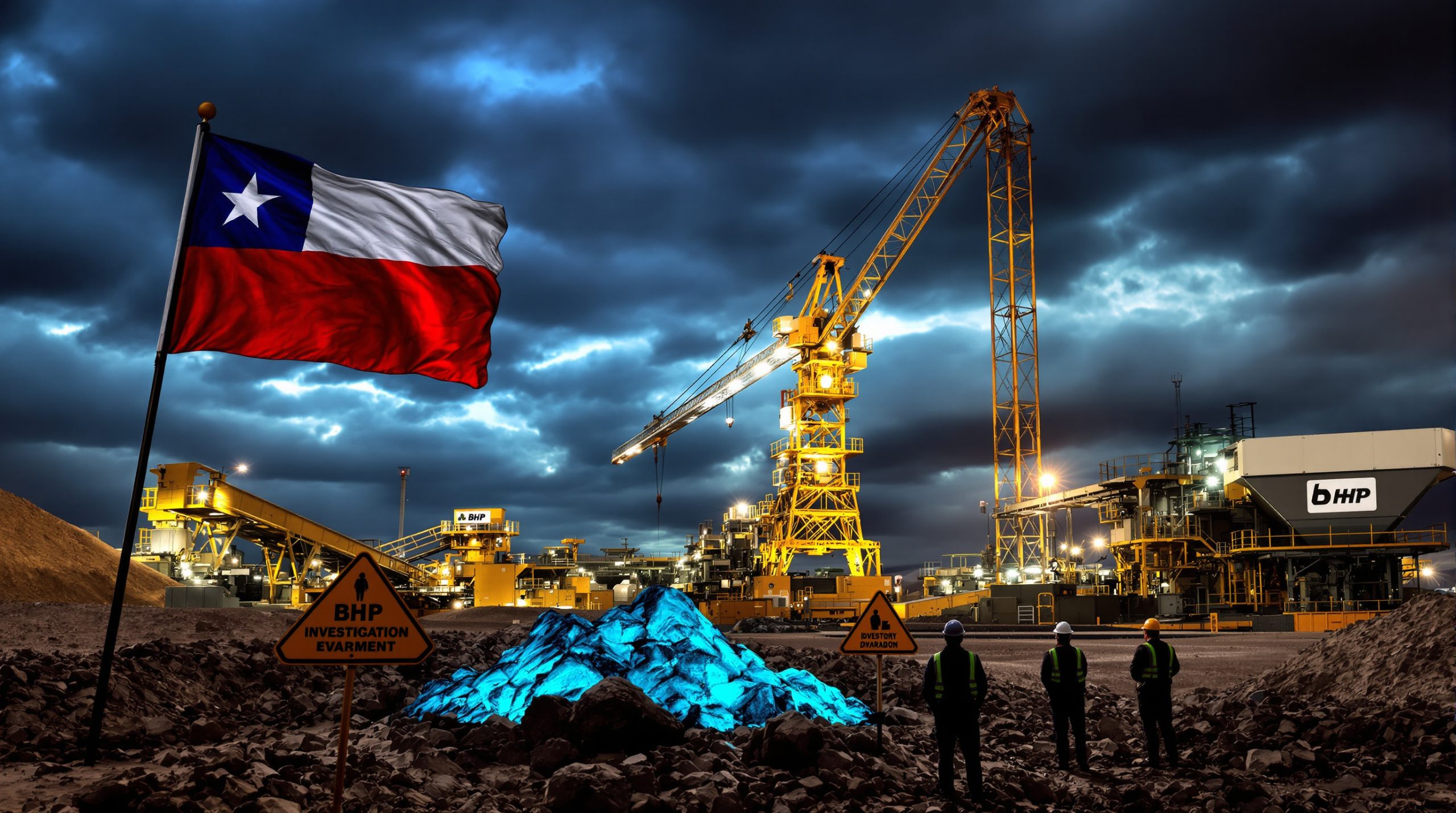The Pivotal Dynamics of LME Week 2025: Navigating Supply Constraints and Regulatory Challenges
LME Week 2025, commencing October 13 in London, arrives at a critical juncture for the global metals industry. Market participants face a complex landscape of supply chain fragmentation, evolving carbon regulations, and geopolitical tensions that are fundamentally reshaping traditional trade patterns for copper, aluminium, and zinc markets. This year's discussions will focus on unprecedented supply constraints alongside increasing environmental compliance costs that are redefining market fundamentals.
Current Market Landscape and Driving Forces
The base metals industry finds itself at a decisive crossroads in 2025, with simultaneous pressures creating both challenges and opportunities:
- Supply chain fragmentation driven by ongoing trade tensions and evolving tariff policies
- Transition toward decarbonization creating new compliance costs while opening market opportunities
- Shifting demand patterns from accelerating energy transition technologies
- Geopolitical realignment affecting traditional supply routes and partnerships
How Is the EU Carbon Border Adjustment Mechanism Reshaping Aluminium Markets?
CBAM Implementation Timeline and Market Uncertainty
The European Union's Carbon Border Adjustment Mechanism enters its definitive phase on January 1, 2026, introducing significant cost implications for aluminium importers. Despite implementation being just three months away, market participants face substantial uncertainty due to critical factors:
- European Commission's September 29, 2025 announcement delaying publication of CBAM and ETS benchmarks until "early 2026"
- Lack of transparency regarding precise cost structures before their introduction
- Final CBAM liabilities for 2026 remaining unknown until mid-2027
- Significant volatility in EU Emissions Trading Scheme allowance prices that determine CBAM certificate costs
This regulatory ambiguity has triggered market responses that are already reshaping trade flows and fundamentally altering pricing structures across Europe. The decarbonisation benefits for mining companies that adapt early could provide competitive advantages as these regulations take full effect.
Premium Surge and Stockpiling Behavior
The approaching CBAM implementation has driven significant market reactions, particularly visible in premium increases:
| Aluminium Premium | October 7, 2025 | September 7, 2025 | Change |
|---|---|---|---|
| P1020A in-whs dp Rotterdam | $250-280/tonne | $220-250/tonne | +$30/tonne |
| P1020A in-whs dup Rotterdam | $185-200/tonne | $150-170/tonne | +$35/tonne |
These premium increases reflect a market-wide rush to secure aluminium supplies ahead of CBAM implementation, as importers attempt to mitigate future carbon-related costs that remain difficult to quantify.
Methodology Adaptations for Carbon Pricing
Market infrastructure is actively adapting to incorporate carbon costs in pricing mechanisms:
- Fastmarkets' benchmark assessment for European aluminium P1020A premiums will include CBAM costs from January 2026 following extensive market consultation
- Similar methodology reviews are underway for regional premiums in Italy and Spain
- These changes represent fundamental shifts in how aluminium is priced in European markets, with carbon costs becoming an integral component of market value
What Impact Are Trade Tensions Having on Global Aluminium Flows?
US-Canada Tariff Dynamics and Market Redirection
The implementation of 50% tariffs on Canadian aluminium imports to the US has fundamentally altered traditional North American trade patterns, creating ripple effects throughout global markets:
| EU Aluminium Imports from Canada | Volume (tonnes) | Change vs. May 2025 |
|---|---|---|
| July 2025 | 5,091,852 | +253% |
| June 2025 | 6,092,307 | +322% |
| May 2025 | 1,444,509 | – |
This dramatic redirection of Canadian aluminium to European markets demonstrates how quickly trade policies can reshape global supply chains and regional price dynamics. The ongoing US-China trade impact further complicates these patterns as manufacturers adapt to changing tariff structures.
Potential Market Outcomes from Trade Negotiations
Market participants are closely monitoring ongoing US-Canada trade talks, with several potential scenarios affecting global aluminium flows:
- If tariffs remain: Continued diversion of Canadian aluminium to Europe, maintaining pressure on US premiums
- If trade deal reduces tariffs: Potential competition between US and European buyers for Canadian material
- If Section 232 discussions follow: Possible normalization of North American aluminium flows
The Midwest US aluminium premium has already responded to these dynamics, rising to 76-78 cents per pound by October 7, 2025, up from previous levels that had begun attracting Canadian material despite tariffs. Recent US tariffs impact suggests these trends could persist well into 2026.
According to Fastmarkets analyst Andy Farida, "We are seeing signs that trade tensions between the two powerhouses are thawing… but Section 232 could remain a separate issue, meaning that the 50% tariff on aluminium remains for the foreseeable future."
Why Are Copper Concentrate Benchmarks Under Unprecedented Pressure?
Structural Shifts in Benchmark Pricing System
The copper concentrate benchmark system faces existential challenges in 2025, with industry experts describing it as "structurally broken":
- Predictions for 2026 TC/RC benchmarks range from negative $(10)s to positive single digits per tonne
- Mid-year benchmark between Antofagasta and Asian smelters set at $0/tonne for 2026 supplies
- This represents a dramatic decline from $21.25/tonne for 2025 benchmarks
Fastmarkets principal analyst Andrew Cole indicates that annual benchmark terms in the fourth quarter are "likely to be set at or below zero," removing a key financial lifeline for smelters relying on this year's benchmark.
This unprecedented pressure on the benchmark system stems from:
- China's growing dominance in custom smelting capacity
- Market shift toward spot-driven transactions
- Persistent supply constraints from mine disruptions
Smelter Profitability Divergence
Despite negative spot treatment charges, smelter responses have varied dramatically by region:
- Chinese smelters report decade-high profits supported by by-product revenues (gold, sulphuric acid)
- Non-Chinese operations face harsher conditions, with closures or output cuts at facilities in:
- The Philippines (Glencore's PASAR facility)
- Namibia (Sinomine's Tsumeb facility)
- Japan (facilities operated by Mitsubishi Materials and JX Nippon)
- European smelters have shown unexpected resilience despite predictions of closures during last year's LME Week
Market Bifurcation Between Traders and Smelters
The entry of oil and gas traders into copper concentrates markets has created what industry sources describe as a "bifurcated market" between trader and smelter pricing:
- Copper concentrates counterparty spread reached unprecedented levels in the $40s/tonne in 2025
- This price divergence reflects fundamentally different market positions and risk appetites between traders and end-users
- Traders can warehouse material while smelters need immediate feedstock, creating distinct pricing dynamics
How Are Supply Disruptions Affecting Copper Cathode Markets?
Production Losses and Price Response
Copper mine production has faced significant challenges in 2025, creating substantial market tightness:
- Estimated 840,000 tonnes of unplanned production losses due to operational issues and accidents
- Major disruptions at flagship projects including:
- Grasberg (Indonesia)
- Quebrada Blanca (Chile)
- Kamoa-Kakula (Democratic Republic of Congo)
- LME copper prices surged above $10,800/tonne in October 2025 in response to these supply constraints
These supply disruptions have fueled intense debate over whether supply constraints will continue to drive the market through 2027, with market participants carefully monitoring recovery timelines at affected operations. Recent copper price prediction models suggest further upside potential as these constraints persist.
US Tariff Impact and Inventory Buildup
The threat and subsequent exemption of 50% US tariffs on copper created significant market distortions with lingering effects:
- COMEX-LME arbitrage reached nearly $3,000/tonne before tariff exemption was granted
- Front-loading ahead of the August 1 deadline resulted in COMEX stocks reaching 22-year highs
- Estimated 600,000 tonnes stockpiled off-market in the US
- Market sources predict this oversupply will not clear until Q1 2026
This situation illustrates how policy uncertainty can create long-lasting market imbalances, even after the initial catalyst is removed.
What's Behind the Zinc Stock Drawdowns Despite Weak Demand?
LME Zinc Inventory Puzzle
One of the most discussed topics at LME Week will be the puzzling decline in LME zinc stocks:
- Stocks fell to 38,250 tonnes by October 8, 2025, continuing a downward trend since July
- This decline contradicts fundamentally weak demand signals from:
- China's struggling property market
- European automotive industry slowdown
- Overall economic growth concerns
The disconnect between inventory drawdowns and weak demand fundamentals has created significant market speculation about whether specific trading houses are removing material for strategic positioning.
Supply-Demand Outlook for 2026
Despite current stock drawdowns, zinc market fundamentals point toward potential oversupply moving forward:
- Production increases expected from mines in:
- Democratic Republic of Congo
- Europe
- Peru
- China
- Additional supply from Russia's Ozernoye mine now shipping to Chinese smelters
- Zinc concentrate treatment charges trending upward as mine supply outpaces smelter capacity
- Weak demand prospects from key consuming sectors including construction and automotive
What Are the Broader Implications for Base Metals Markets?
Environmental Regulation and Transparency Trends
Beyond immediate market dynamics, LME Week 2025 discussions will address longer-term structural changes reshaping the metals industry:
- Growing emphasis on emissions transparency across metal supply chains
- LME requirements for aluminium producers to submit detailed carbon emissions data by March 2025
- Potential development of price premiums for low-carbon metals
- Adaptation of pricing methodologies to incorporate environmental compliance costs
These environmental trends represent a fundamental shift in how metals are valued, with carbon intensity becoming an increasingly important component of market pricing. Following industry innovation trends will be crucial for companies seeking to navigate this transition successfully.
Geopolitical Fragmentation and Supply Security
The metals industry continues to navigate increasing geopolitical complexity with strategic implications:
- Diversification of supply chains to reduce concentration risks
- Reassessment of critical mineral security in Western economies
- Evolving trade relationships and tariff structures affecting traditional market flows
- Growing emphasis on domestic processing capacity for strategically important metals
Navigating Uncertainty in Base Metals Markets
LME Week 2025 arrives at a moment of significant transition for global base metals markets. Industry participants face a complex landscape shaped by supply constraints, regulatory evolution, and geopolitical realignment. The discussions and negotiations during this pivotal week will help establish market direction for the coming year, with particular focus on:
- Adapting to carbon regulation and emissions transparency requirements
- Resolving benchmark pricing challenges in copper concentrates
- Understanding divergent regional market dynamics across aluminium, copper, and zinc
- Preparing for potential supply constraints through 2027
Market participants who successfully navigate these challenges will be positioned to capitalize on opportunities created by the energy transition, while managing the risks associated with regulatory compliance and supply chain fragmentation.
Further Exploration
Readers interested in learning more about base metals markets and LME Week can explore related educational content available from Fastmarkets' base metals analysis, which regularly publishes market analysis on metals trading, pricing mechanisms, and industry trends.
Ready to Be Alerted to the Next Major Mining Discovery?
Gain an immediate market edge with Discovery Alert's proprietary Discovery IQ model, which delivers real-time notifications of significant ASX mineral discoveries and transforms complex data into actionable investment insights. Visit the Discovery Alert discoveries page to understand why major mineral discoveries can lead to exceptional market returns, and begin your 30-day free trial today.




